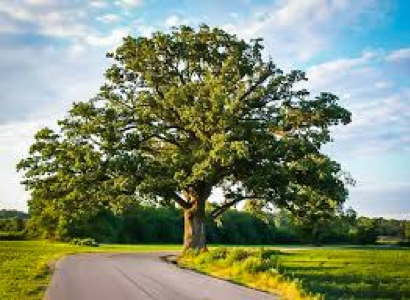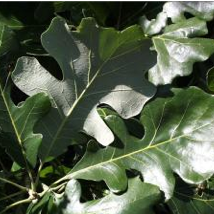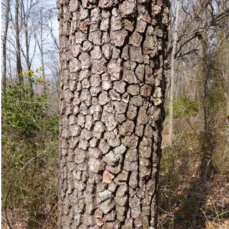
Bur Oak
Quercus macrocarpa
Family: Fagaceae
Leaf Type: Deciduous
Mature Height: ~30 m (~100 ft)
Fall Color: Golden to yellow-brown
Native Range: Bur oaks are native to the midwestern U.S. and in small patches of the Southeast. It is one of the most urban tolerant of the white oak species.

Features
The leaves of bur oaks are large and fiddle-shaped. They are dark green on the top but are pale and hairy underneath. The bark is gray and arranged in long rectangular blocks. As with all oaks, the fruit of the bur oak is an acorn. Bur oak acorns are easily distinguished by their shaggy-fringed cup and because of their large size. Acorns are not produced in large quantities every year; a “mast year” happens every two to five years when acorns are produced in large quantities with smaller crops of acorns produced between years. We recommend not sampling the fruits & nuts of the trees and plants here at Adventure Science Center.

Fun Facts
● Bur oaks have some of the largest acorns of any oak found in the U.S. and are named for the burs on the cap of the acorn.
● Bur oaks can have “wings” on their branches which look like thin strips of wood sticking out on either side.
Did you know that trees provide homes for animals, keep us cool and clean our air? Click here to learn more about the benefits that trees provide to us and our world.

